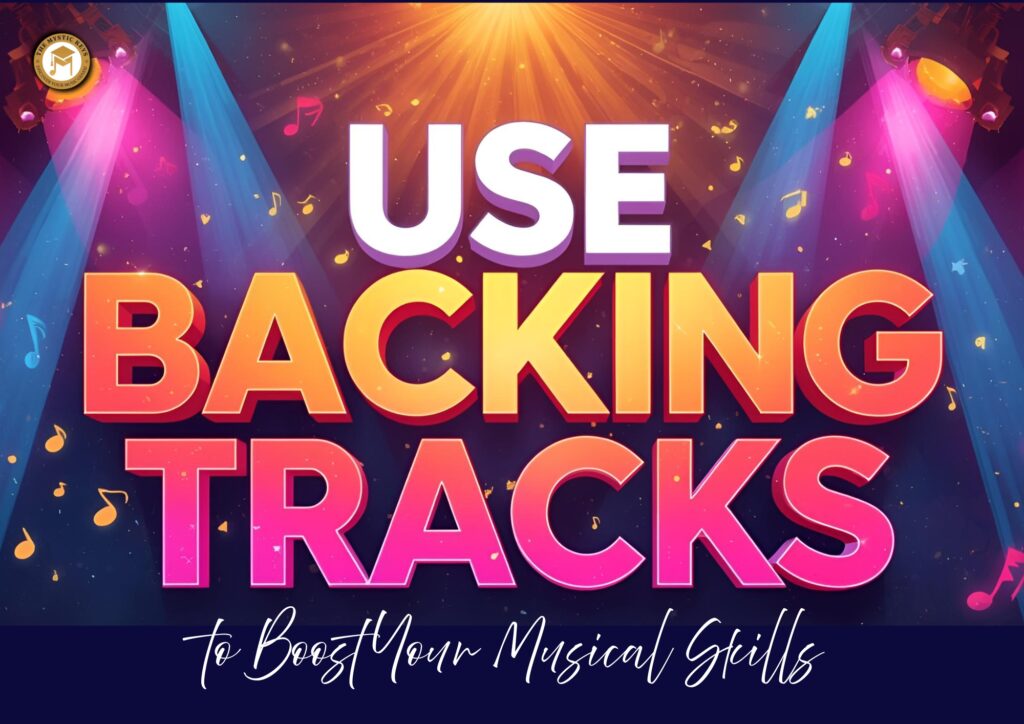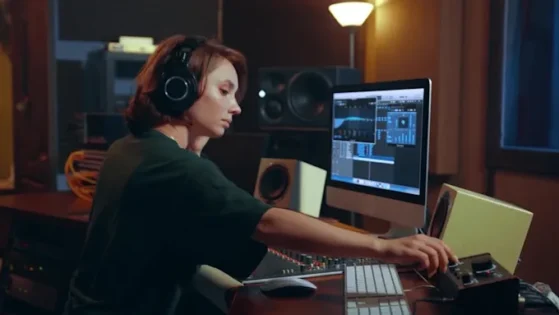
Use Backing Tracks to Boost Your Musical Skills
Use Backing Tracks to Boost Your Musical Skills
Whether you’re a budding musician just beginning your journey or an experienced player looking to refine your craft, one of the most powerful ways to advance your skills is by practicing with backing tracks. These pre-recorded accompaniments don’t just fill the silence — they create an entire musical atmosphere, allowing you to explore melodies, experiment with improvisation, and understand how your instrument fits within a larger soundscape.
As you start playing along, something shifts — the practice room begins to feel like a live stage, and your focus naturally expands beyond technique to include timing, dynamics, and musical emotion. The sense of playing with other instruments builds both confidence and awareness, helping you feel rhythm rather than simply count it.
Unlike the steady tick of a metronome or the limitations of practicing alone, this method gives you a sense of interaction — a musical conversation between your playing and the sound that surrounds you. Gradually, your coordination sharpens, your sense of rhythm deepens, and your creativity finds new directions to grow.
In the pages ahead, we’ll explore how you can make the most of this approach to bring both confidence and artistry into your playing, turning ordinary practice into a truly inspiring musical experience.

Understanding Backing Tracks
Backing tracks are recordings of musical accompaniments that exclude the lead instrument or vocals. They often feature elements like drums, bass, rhythm guitar, keyboards, and other supporting instruments, creating a full musical backdrop. Whether you’re a guitarist, pianist, singer, or even a wind instrument player, these tracks serve as an ideal playground for practice — helping you explore scales, chord progressions, improvisation, and phrasing in a more dynamic and interactive way.
What truly sets backing tracks apart is their ability to replicate the feeling of playing with a live band. Instead of practicing in isolation, you’re placed right in the middle of a musical environment where timing, groove, and expression come alive. This not only keeps your practice sessions engaging but also strengthens your sense of harmony, rhythm, and dynamics — essential qualities for performing confidently in real-world settings.

Choosing the Right Backing Track
Before diving into practice, it’s crucial to select the right backing track that aligns with both your skill level and your musical goals. Starting with the right track sets the foundation for effective practice.
Start Simple: If you’re a beginner, begin with backing tracks that have slower tempos and basic chord progressions. Tracks in major keys or simple blues progressions provide an ideal starting point, allowing you to focus on accuracy and timing without feeling overwhelmed.
Match Your Goals: Once you’ve chosen a track, consider what you want to achieve. If your aim is improvisation, look for tracks with open sections that give you freedom to experiment. If rhythm and timing are your priorities, select tracks with a steady, consistent groove that will help you lock in and develop precision.
Consider the Genre: Backing tracks span countless genres—rock, jazz, pop, classical, funk, and more. Practicing in your preferred genre can keep you motivated, but don’t hesitate to explore different styles. Experimenting with new genres not only keeps practice interesting but also broadens your musical vocabulary.
By thoughtfully choosing your backing tracks, you create a practice environment that is focused, productive, and enjoyable, giving you the best chance to improve steadily while having fun.

Structuring Your Practice with Backing Tracks
To get the most out of backing tracks, you need a structured approach. Here’s a step-by-step guide:
1. Warm-Up First
Before you play along with a backing track, start with a warm-up. Play scales, arpeggios, or simple chord progressions at a comfortable tempo. This primes your fingers and mind, making your practice more effective.
2. Start Slow
When trying a new backing track, begin at a slower tempo. Many tracks allow you to adjust the speed without altering the pitch. Playing slowly helps you focus on accuracy, timing, and note choice rather than rushing through the piece.
3. Focus on Sections
Instead of attempting to play along with an entire track at once, break it into smaller sections. Practice each section separately, master it, and then gradually string them together. This method ensures precision and builds confidence.
4. Record Yourself
Recording your sessions is a powerful tool. Listening back allows you to identify weaknesses in timing, phrasing, and dynamics. You’ll notice things you might miss while playing, giving you specific areas to work on in future sessions.
5. Improvise
Once you’re comfortable with the track, start experimenting with improvisation. Use scales, arpeggios, or chord tones to create your own solos and melodies. Backing tracks provide a safe space to explore without the pressure of performing live.
Developing Timing and Rhythm
One of the greatest benefits of backing tracks is improving timing and rhythm. Unlike playing with a metronome, backing tracks simulate the feel of a live band. You’ll learn to:
Lock in with the groove of drums and bass
Anticipate chord changes
Develop a sense of space and phrasing in your playing
For drummers, bassists, and rhythm guitarists, practicing with backing tracks helps maintain consistent tempo and strengthens coordination. For lead players and soloists, it teaches you to play musically and tastefully rather than mechanically.

Using Backing Tracks for Ear Training
Backing tracks are not only helpful for timing and rhythm — they’re also excellent for developing your ear. When you play along, you’re engaging with a full musical environment, which allows you to hear how your part interacts with the harmony and rhythm.
As you practice, try to:
Identify chord changes by ear – notice how the harmony shifts and anticipate the next chord.
Recognize scale patterns – connect the notes you play with the underlying chords.
Predict rhythmic variations and fills – pay attention to the drums and bass for cues about changes.
By focusing on these elements, you’re moving from simply playing notes to actively listening and responding to the music. This trains your ear, sharpens your sense of timing, and helps you internalize harmonic and melodic structures. Over time, these skills allow you to anticipate changes naturally, improvise more confidently, and perform with a deeper sense of musical awareness — all of which are invaluable in both practice and live performance.

Advanced Techniques with Backing Tracks
Once you’ve mastered basic practice techniques, you can use backing tracks to explore more advanced concepts:
Modal Playing: Experiment with different modes over the same chord progression to discover new sounds and textures.
Genre Fusion: Mix elements of different genres by playing jazz lines over blues tracks or rock riffs over funk grooves.
Dynamic Expression: Practice playing softer and louder, varying your articulation to match the track’s energy.
Backing tracks provide endless opportunities to refine your style, experiment with phrasing, and develop a unique musical voice.

Integrating Backing Tracks into Daily Practice
Consistency is key to improvement. Integrate backing tracks into your daily practice routine:
Warm-Up: 5–10 minutes of scales or exercises
Technical Practice: Focus on chords, arpeggios, or scales along a backing track
Improvisation: Explore solos and melodies
Recording and Review: Reflect on your progress and identify areas for improvement
By creating a balanced routine, you ensure that each practice session is both productive and enjoyable.

Conclusion
Backing tracks are more than just a practice tool—they are a gateway to musical freedom, creativity, and growth. Beyond refining technique, they place you in a real musical environment where you learn to respond, adapt, and express. When you play along with a backing track, you’re not only practicing notes—you’re developing the art of listening, interacting, and feeling the rhythm as part of a musical ensemble.
They play a vital role in building timing, ear training, improvisation skills, and confidence. The experience of playing in a band-like setting helps you connect rhythm with harmony, encouraging musical expression that feels both authentic and natural.
Whether you’re a beginner exploring your first scales or an advanced player shaping your signature sound, consistent practice with backing tracks can take your playing to a whole new level. Each session strengthens your sense of timing, improves fluency, and helps you blend seamlessly with other instruments.
At The Mystic Keys, our lessons often integrate specially designed backing tracks to make practice more engaging and realistic. Students are guided to explore improvisation, refine their tone, and build musical awareness—all while experiencing the joy of performing in a full-band context.
So, start slow, practice with intention, and keep experimenting. Listen deeply to the groove, try new ideas, and enjoy the process of creating music that feels alive. With patience and consistency, you’ll soon notice a remarkable transformation—not just in your technique, but in your confidence and musical expression.
Because at The Mystic Keys, every note you play is a step toward discovering your true musical voice.
For more information and exciting resources about learning music, visit our website at The Mystic Keys. For more music content and exciting offers follow us on
Facebook, Instagram, YouTube, LinkedIn, Twitter, Pinterest, and Threads.

